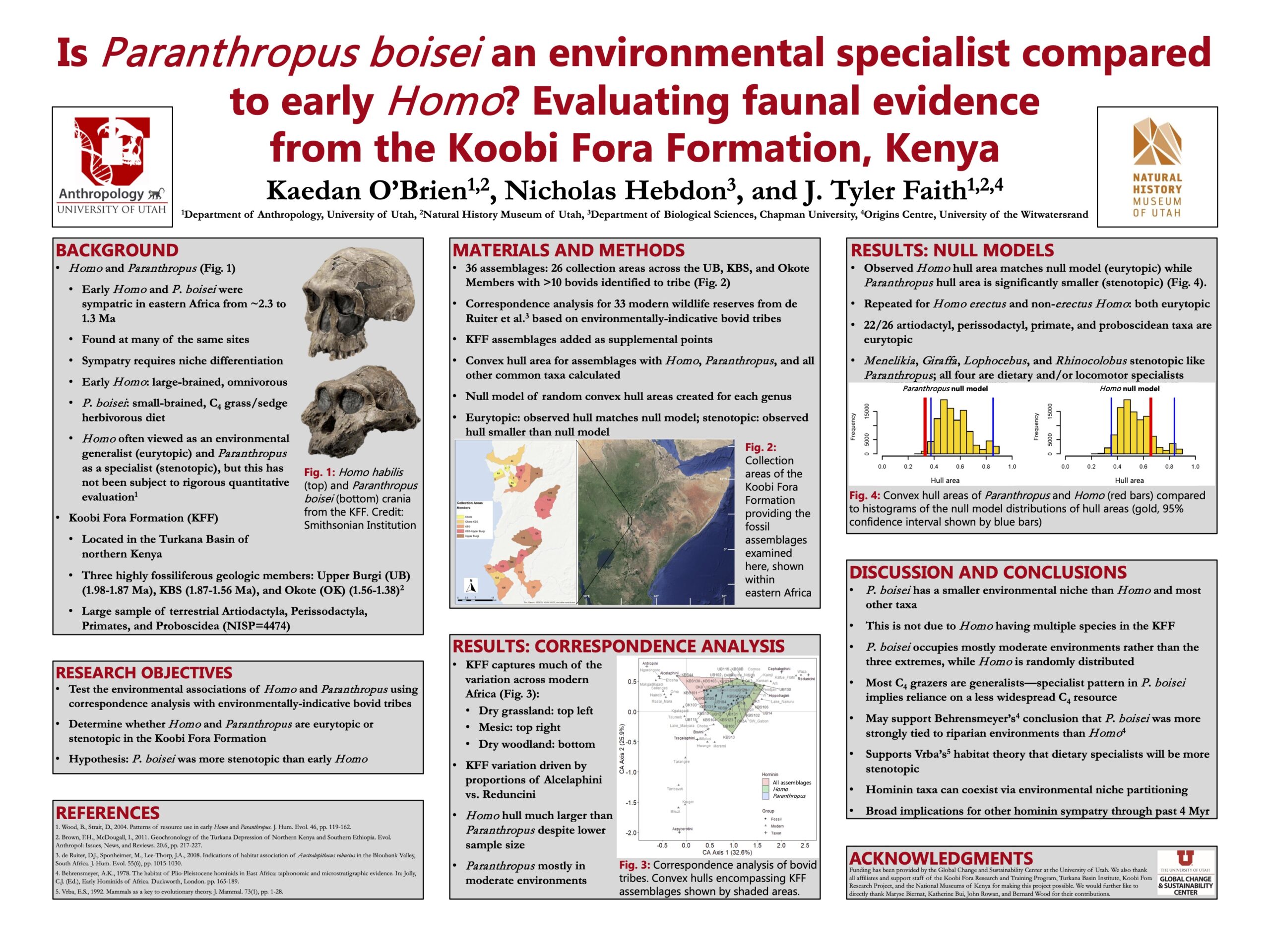Is Paranthropus boisei an environmental specialist compared to early Homo? Evaluating faunal evidence from the Koobi Fora Formation, Kenya
–Kaedan O’Brien, Nicholas Hebdon, J. Tyler Faith
[bs_collapse id=”collapse_bb86-afd7″]
[bs_citem title=”Bio” id=”citem_e610-6c22″ parent=”collapse_bb86-afd7″]
I am a PhD student working with Dr. Tyler Faith in the Department of Anthropology. I use the fossil record and stable isotopes to reconstruct community structures and paleoenvironments. My primary focus is on the Pleistocene grasslands of Kenya, with particular interest in the evolution and ecology of Equidae and Bovidae and on prehistoric migration. This has led to field work in the Turkana and Victoria basins of Kenya. Additionally, I have done research and field work using Utah caves to understand biogeography of the Intermountain West. [/bs_citem]
[bs_citem title=”Abstract” id=”citem_eca8-96a7″ parent=”collapse_bb86-afd7″]
In this study, we use the fossil record of large mammals from the Koobi Fora Formation dated to 2.0-1.4 Ma to quantitatively evaluate the ecological breadth of faunal assemblages associated with Homo and Paranthropus boisei through correspondence analysis. We also evaluate other mammal genera to determine where each falls on a spectrum of generalist to specialist with regard to environmental associations. Results suggest Homo and most artiodactyl, perissodactyl, and proboscidean taxa are associated with faunal assemblages representing the full possible range of environmental variability in the Koobi Fora Formation, while P. boisei, most monkeys, and several other genera are limited to a smaller environmental niche space. This suggests that the ecological differences between Homo and Paranthropus concern environmental associations in addition to diet.
[/bs_citem]
[bs_citem title=”Narrative” id=”citem_780c-0f71″ parent=”collapse_bb86-afd7″]
Two million years ago, our ancestors (the genus Homo) lived alongside another group of human relatives, the plant-eating Paranthropus. Using fossil data Northern Kenya, we tested whether these two groups were associated with a wide or narrow set of environmental conditions. We find that Homo was a generalist, associated with all habitats in the region, whereas Paranthropus was a specialist, preferring some habitats over others.
[/bs_citem]
[/bs_collapse]

